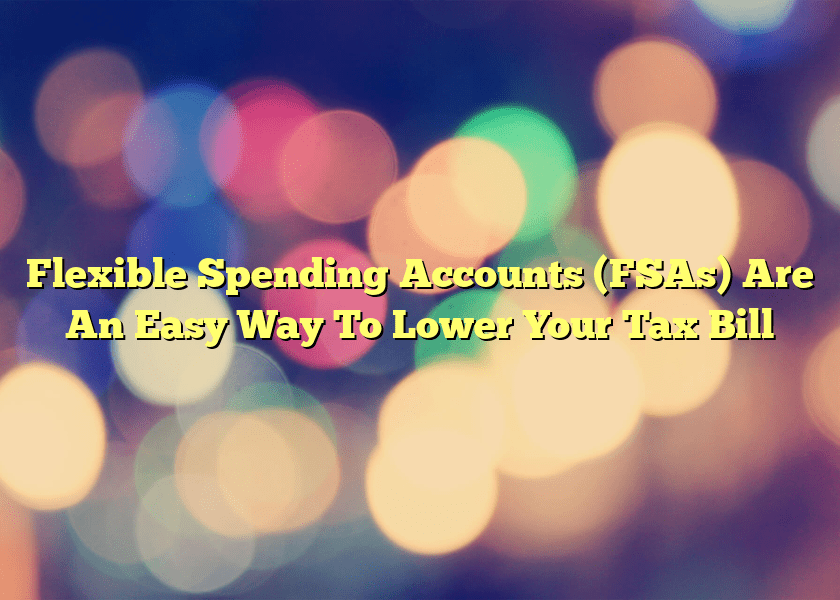Flexible Spending Accounts (FSAs) Are An Easy Way To Lower Your Tax Bill
A flexible spending Account (FSA) is a way for you to put money aside tax free for important expenses. This can potentially save you hundreds of dollars in taxes. Put simply, an employer sets aside part of your earnings to pay for qualified expenses, and that process lowers the overall tax you owe at the end of the year.
There are primarily three types of FSA:
1. The Health Care FSA (also known as Medical FSA, Medical Expense FSA, or simply Health FSA), where qualified medical expenses are put aside. These can include insurance deductibles, co-payments, and coinsurance costs as well as specific products, treatments, and medications not covered by insurance. Medical issues can be serious, or as simple as buying a year’s worth of band-aids.
2. The dependent care FSA, where qualified child care expenses can be put aside. While almost always used for children, they can also be used for “adult day care” for elderly dependents (such as parents) that live with you.
3. The travel FSA, where costs of public transportation and in some cases parking can be put aside tax free
(Note that funds cannot be transferred between different types of FSA if you have more than one type, even if they are with the same company)
The math behind the savings in FSAs is easy. If your base salary is $40,000 and you use a Dependent Care FSA for $5000 and a Health Care FSA for $2000, you will only be taxed on an income of $33,000. Therefore, you will save the following amount: (your tax bracket, or, if you itemize, your effective tax rate) x (the amount you put aside). If you put aside $7000 and your tax bracket is 28%, your savings is $1960. (One specific issue you should run by a tax professional would affect those who have medical expenses over 7.5% of their annual income. In that case, itemizing the deductions may provide better tax savings than the FSA.) Because there could be other factors that affect your taxes, you should rely on your tax professional or any popular tax software to assess your exact potential savings.
A new addition to the FSA market, one which makes things much easier, smoother, and paperless, is the FSA Debit Card. These are credit cards that are used to pay for any of the above expenses after you’ve signed up for an FSA account. Currently there are 7 million or more debit cards tied to an FSA account, which involves almost one-third of people who have FSAs. By 2010, it is projected this rate will increase to 85%. If you don’t use a debit card you will need to submit proof of payment for qualified expenses, such as receipts, bills, and statements.
There are two very important restrictions you should know about when signing up for an FSA. Most importantly, all the money put aside must be spent within the “plan year”, which is usually the calendar year but for some companies can be the fiscal year. The money left in the account at the end of the “plan year” is forfeited back to the company. Second, the expenses must “qualify”. A description of the qualifying expenses might vary from company to company, and even if not would be too comprehensive for this article. However, they are generally logical and fair: Dependent care expenses include most day care and other childcare provided, and medical expenses include most products used in the treatment or sometimes prevention of a medical problem. It is vital that you check out the full listing of a FSA plan’s inclusions, exclusions, and rules before signing up.
